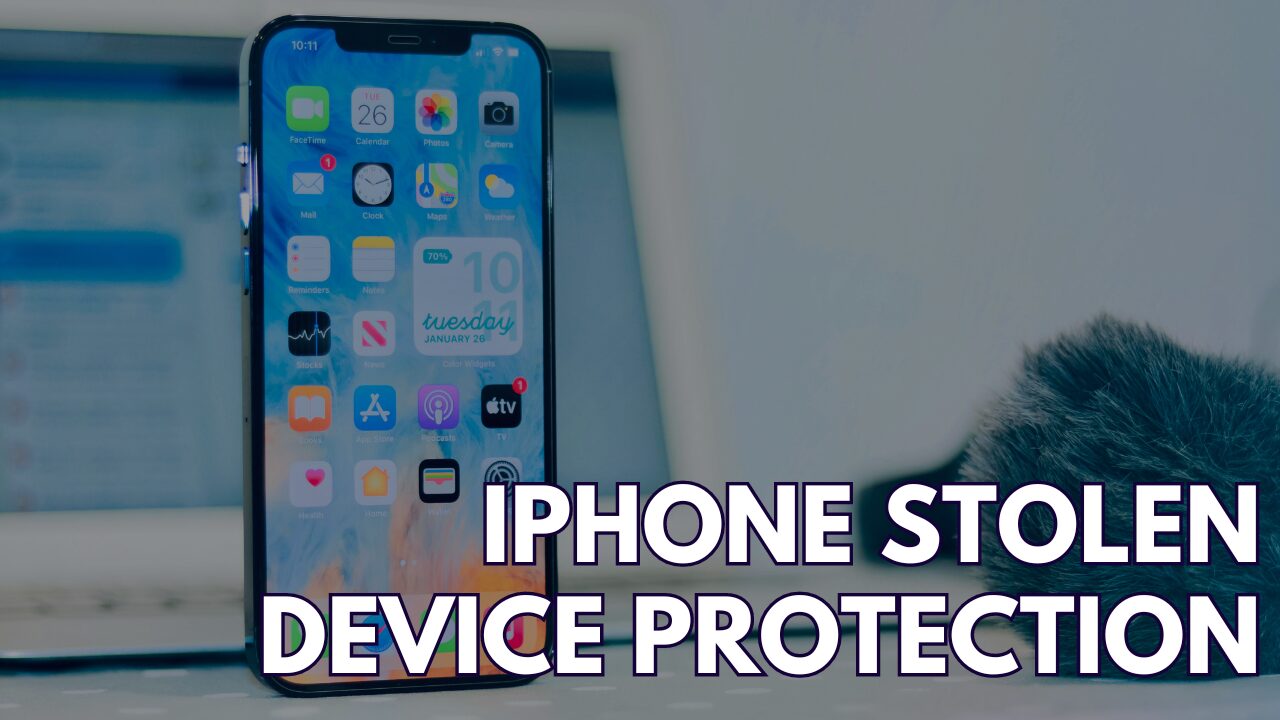-
Connect With Your Ottawa IT Service Company at (613) 828-1384
Connect With Your Ottawa IT Service Company at (613) 828-1384
With technology being a significant part of daily life, safeguarding your personal devices has become crucial. The iPhone Stolen Device Protection feature provides a robust shield for your device, especially when it may fall into the wrong hands. By enabling Stolen Device Protection, your iPhone gains an additional layer of security that goes into effect when it recognizes that the device is in an unfamiliar location. This feature, introduced in iOS 17.3, helps prevent unauthorized users who may know your passcode from accessing sensitive data or making critical changes to your account settings.
Understanding how Stolen Device Protection works can provide peace of mind. It ensures that certain features and actions on your iPhone require additional security measures, such as biometric authentication, when away from trusted locations like your home or workplace. If your iPhone is misplaced or stolen, these measures make it significantly harder for others to access your personal information or alter settings that could compromise your privacy.
iPhone’s Stolen Device Protection is a suite of features designed to safeguard your device in case of theft or loss, offering robust security mechanisms beyond a simple passcode.
Stolen Device Protection in your iPhone acts as a comprehensive security system. It leverages additional security requirements to prevent unauthorized changes to your account or access to personal information when the device is in unfamiliar locations. This feature is integral to iOS and is available on iPhones running iOS 17.3 or later.
Activation Lock is a crucial part of Stolen Device Protection. It links your iPhone with your Apple ID and is automatically enabled when you turn on Find My iPhone. Even if thieves know your passcode, they can’t disable Find My iPhone, erase your device, or reactivate it with their details without your Apple ID password.
The Find My iPhone service is pivotal to Stolen Device Protection. It allows you to locate your iPhone on a map, play a sound to help you find it if it’s nearby, mark it as lost, or erase it remotely to protect your data. Ensure Find My iPhone is always enabled on your device to maximize protection.

To optimally protect your iPhone in case of theft, you must follow a few critical steps to set up Stolen Device Protection. This setup ensures that your personal information remains secure and your device is recoverable.
To begin, make sure Find My iPhone is activated on your device:
It is vital to secure your Apple ID since it’s linked to Stolen Device Protection:
Enabling Two-Factor Authentication (2FA) adds an additional layer of security:
By completing these steps, you’ve laid a strong foundation for keeping your iPhone secure.
iPhone Stolen Device Protection is designed to safeguard your device in the event it is lost or stolen. Utilizing this feature involves reporting the theft, remotely erasing data, and recovering the device if it is found.
To report your iPhone as stolen and enable protection:
If you determine that retrieving your iPhone is unlikely:
If your missing iPhone is found:
When considering using iPhone’s Stolen Device Protection, you must be aware of legal implications, such as proving ownership, and ethical responsibilities, like safeguarding personal data.
To activate Stolen Device Protection, you must verify your ownership of the iPhone. Ownership verification is crucial to ensure that only the legal owner can enable this security feature and access the device after it’s marked as stolen. In cases where you might need to prove ownership, it could involve providing:
Your adoption of Stolen Device Protection carries the ethical responsibility to protect personal data—not just yours but that of others who may have shared information with you. Here are specific aspects to consider:
While stolen device protection is a powerful tool, it does not substitute legal advice or ethical responsibility regarding data privacy and protection.
Your iPhone’s Stolen Device Protection employs cutting-edge security to safeguard your device.
The Secure Enclave is a hardware-based feature that provides a fortress for personal data. On your iPhone, it safeguards your passcode and encryption keys, ensuring that personal information tied to Stolen Device Protection remains secure, even if an unauthorized user knows your passcode.
Biometric Identification uses your unique physical characteristics to verify your identity. With Stolen Device Protection, actions like changes to sensitive settings or Apple ID require verification through Face ID or Touch ID, which are deeply integrated with the Secure Enclave. This means that a thief cannot access or alter significant settings without your biometric data even with your passcode.
In addressing the challenges you may face with iPhone Stolen Device Protection, understanding solutions for common issues such as Apple ID recovery, a disabled iPhone, or connectivity problems can be crucial.
If you’ve lost access to your Apple ID, it’s vital to recover it since it’s integral to Stolen Device Protection. You can start recovery on Apple’s official website or from your device. Apple provides additional steps and support to regain access if you cannot verify your identity.
When your iPhone is disabled due to multiple incorrect passcode entries, connect it to iTunes if you’ve previously synced. If not, use recovery mode to reset your device. Note that this will erase all data on your iPhone. Regularly back up your iPhone to iCloud or your computer to avoid data loss.
Stolen Device Protection requires internet connectivity. If your device is offline, ensure your Wi-Fi is on or try toggling Airplane Mode. If the issue persists, reset your network settings by going to “Settings” > “General” > “Reset” > “Reset Network Settings.” Remember, this will also reset your Wi-Fi passwords.